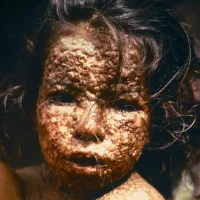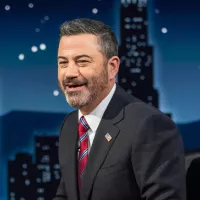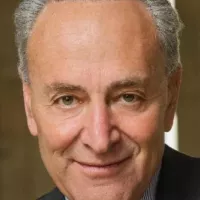Vaccination is the process of administering a vaccine to stimulate the immune system and develop immunity against a specific disease. Vaccines typically contain weakened, live, or killed microorganisms, or components thereof. By activating the body's adaptive immunity, vaccines help prevent illness. A significant benefit of widespread vaccination is the establishment of herd immunity. This protects vulnerable individuals who cannot be vaccinated, such as those with compromised immune systems, by reducing the overall spread of the disease within the population.
1905: Jacobson v. Massachusetts
In 1905, the U.S. Supreme Court upheld compulsory vaccination laws in the landmark case Jacobson v. Massachusetts, ruling that laws could require vaccination to protect the public from dangerous communicable diseases.
1959: WHO calls for smallpox eradication
In 1959, the WHO called for the eradication of smallpox worldwide, as smallpox was still endemic in 33 countries.
1963: Introduction of measles vaccine
In 1963, the measles vaccine was introduced, leading to a dramatic drop in the number of measles cases in wealthy nations.
1966: Smallpox cases worldwide
According to the WHO, in 1966, there were about 100 million cases of smallpox worldwide, causing an estimated two million deaths.
1974: WHO Smallpox Vaccination Program
By 1974, the WHO smallpox vaccination program had confined smallpox to parts of Pakistan, India, Bangladesh, Ethiopia, and Somalia.
1974: Vaccination prevents deaths
In 1974, a WHO-funded study estimated that vaccination prevented 154 million deaths during the 50-year period starting in 1974, with 146 million of these deaths among children under age 5.
1974: WHO goal of universal vaccination
In 1974, the WHO adopted the goal of universal vaccination by 1990 to protect children against six preventable infectious diseases: measles, poliomyelitis, diphtheria, whooping cough, tetanus, and tuberculosis.
1977: Last case of smallpox infection
In 1977, the WHO recorded the last case of smallpox infection acquired outside a laboratory in Somalia.
1979: Smallpox Eradication
In 1979, smallpox was finally eradicated, after causing an estimated 300–500 million deaths in the 20th century. This milestone marks a significant achievement in global health through vaccination efforts.
1980: WHO declares world free of smallpox
In 1980, the WHO officially declared the world free of smallpox, a major achievement in global health.
1990: Vaccination Rates in Developing Countries
In the 1980s leading up to 1990, only 20 to 40% of children in developing countries were vaccinated against measles, poliomyelitis, diphtheria, whooping cough, tetanus, and tuberculosis.
1998: Publication of Wakefield's Paper
In 1998, the physician Andrew Wakefield was the lead author of a paper that linked behavioral symptoms consistent with autism following the administration of the MMR vaccine (an immunization against measles, mumps, and rubella).
2000: Vaccinations Prevented Deaths
According to a 2021 paper, vaccinations against haemophilus influenzae type b, hepatitis B, human papillomavirus, Japanese encephalitis, measles, neisseria meningitidis serogroup A, rotavirus, rubella, streptococcus pneumoniae, and yellow fever have prevented an estimated 50 million deaths from 2000 to 2019.
2000: Establishment of GAVI
In 2000, the Global Alliance for Vaccines and Immunization (GAVI) was established to strengthen routine vaccinations and introduce new and underused vaccines in countries with a per capita GDP of under US$1,000.
2001: Thimerosal removed from US childhood vaccines
In 2001, thimerosal was removed from childhood vaccines in the United States as a precaution, even though evidence supported its safety and efficacy, and there was no increased risk of serious harm or autism.
2003: Cost of SARS outbreak
In 2003, the SARS outbreak in East Asia cost $54 billion.
2004: Retraction of Wakefield's Paper
In 2004, 10 of the original 12 co-authors (not including Wakefield) published a retraction of the article and stated the following: "We wish to make it clear that in this paper no causal link was established between MMR vaccine and autism as the data were insufficient."
2006: Eradication of Polio
By 2006 global health experts concluded that the eradication of polio was only possible if the supply of drinking water and sanitation facilities were improved in slums.
2007: Vaccine Effectiveness Studies in the US
In 2007, studies regarding the effectiveness of vaccines on mortality or morbidity rates of those exposed to various diseases found almost 100% decreases in death rates, and about a 90% decrease in exposure rates in the United States.
2009: Pandemrix Adverse Events and CDC Study
In 2009, Pandemrix, a vaccine for the H1N1 pandemic given to approximately 31 million people, was found to have a higher level of adverse events than alternative vaccines, leading to legal action. In response to reports of narcolepsy, the CDC conducted a study which determined that FDA-approved 2009 H1N1 flu shots were not associated with an increased risk for the neurological disorder.
2009: Public Health Law Research Report on Vaccination Requirements
In 2009, Public Health Law Research reported that there is sufficient evidence supporting the effectiveness of requiring vaccinations as a condition for attending child care facilities and schools, and strong evidence supporting the effectiveness of standing orders, which allow healthcare workers without prescription authority to administer vaccine as a public health intervention.
2010: The Lancet Retracts Wakefield Article
In 2010, The Lancet officially retracted the article by Andrew Wakefield, stating that several elements of the article were incorrect, including falsified data and protocols.
2011: Andrew Wakefield Stripped of Medical License
In 2011, Andrew Wakefield, a leading proponent of the theory that the MMR vaccine causes autism, was found to have been financially motivated to falsify research data and was subsequently stripped of his medical license.
2013: Vaccine Preventable Deaths in Children
In 2013, the World Health Organization estimated that 29% of deaths of children under five-years-old in 2013 were vaccine preventable, while also acknowledging the challenges faced by developing countries in providing full childhood vaccinations due to decreased availability of resources.
2015: Study confirming no link between autism and the MMR vaccine.
In 2015, a study confirmed that there is no link between autism and the MMR vaccine. Infants were given a health plan, that included an MMR vaccine, and were continuously studied until they reached five years old. There was no link between the vaccine and children who had a normally developed sibling or a sibling that had autism making them a higher risk for developing autism themselves.
2017: Dengvaxia Suspension in the Philippines
In 2017, the mass vaccination program in the Philippines was suspended after Dengvaxia, the only approved vaccine for Dengue fever, was found to increase the risk of hospitalization for Dengue fever by 1.58 times in children aged 9 years or younger.
2019: Vaccinations Prevented Deaths
According to a 2021 paper, vaccinations against haemophilus influenzae type b, hepatitis B, human papillomavirus, Japanese encephalitis, measles, neisseria meningitidis serogroup A, rotavirus, rubella, streptococcus pneumoniae, and yellow fever have prevented an estimated 50 million deaths from 2000 to 2019.
December 2020: COVID-19 Vaccinations prevented deaths
From 8 December 2020 to 8 December 2021, COVID‑19 vaccinations prevented an additional 14.4 to 19.8 million deaths in 185 countries and territories.
2020: COVID-19 Pandemic Impact on Vaccinations
From 2020 onwards, UNICEF reported on the extent to which children missed out on vaccinations due to the COVID-19 pandemic.
December 2021: COVID-19 Vaccinations prevented deaths
From 8 December 2020 to 8 December 2021, COVID‑19 vaccinations prevented an additional 14.4 to 19.8 million deaths in 185 countries and territories.
2021: Vaccinations Prevented Deaths
According to a 2021 paper, vaccinations against haemophilus influenzae type b, hepatitis B, human papillomavirus, Japanese encephalitis, measles, neisseria meningitidis serogroup A, rotavirus, rubella, streptococcus pneumoniae, and yellow fever have prevented an estimated 50 million deaths from 2000 to 2019.
June 2022: COVID-19 Vaccinations prevented deaths
According to a June 2022 study, COVID‑19 vaccinations prevented an additional 14.4 to 19.8 million deaths in 185 countries and territories from 8 December 2020 to 8 December 2021.
2022: Increase of unvaccinated children
In 2022, it was reported that the number of children who did not receive a single dose of the vaccine increased to 13.9 million.
2023: Vaccination Programs Recovering
By summer 2023, UNICEF described vaccination programs as getting "back on track" after disruptions caused by the COVID-19 pandemic.
2023: WHO/UNICEF report on DTP coverage
In 2023, a WHO/UNICEF report found that the number of children who received three doses of the vaccine against diphtheria, tetanus and pertussis (DTP) in 2023 remained at 84% (108 million) and the number of children who did not receive a single dose of the vaccine increased to 14.5 million in 2023.
2024: WHO/UNICEF report on immunization coverage
In 2024, a WHO/UNICEF report found that the number of children who received three doses of the vaccine against diphtheria, tetanus and pertussis (DTP) in 2023 remained at 84% (108 million), but the number of children who did not receive a single dose of the vaccine increased from 13.9 million in 2022 to 14.5 million in 2023.
Mentioned in this timeline
India officially the Republic of India is located in South...

The World Health Organization WHO is a specialized agency of...

Measles also known as morbilli or rubeola is a highly...
Pakistan officially the Islamic Republic of Pakistan is a South...

Smallpox a deadly infectious disease caused by the variola virus...
Massachusetts officially the Commonwealth of Massachusetts is a state located...
Trending

41 minutes ago Jimmy Kimmel Mocks Trump's Election Meltdown After Democratic Wins on Late Night.
42 minutes ago Ariana Greenblatt's 'Now You See Me' installment: Trailer Released, Box Office Potential

42 minutes ago Maya Hawke shares Uma Thurman's quirky advice about working with Quentin Tarantino: Keep shoes on.
42 minutes ago Zcash surges due to privacy focus and 'Cypherpunk Principles,' boosted by Galaxy report.

5 months ago Sam Leavitt Honors Pat Tillman with Donation to Foundation; Sun Devils Rise
25 days ago John Bolton faces potential indictment as federal prosecutors finalize charges next week.
Popular

Nancy Pelosi is a prominent American politician notably serving as...

Zohran Kwame Mamdani is an American politician currently serving as...

William Franklin Graham III commonly known as Franklin Graham is...

Chuck Schumer is the senior United States Senator from New...
Abigail Spanberger is an American politician who served as the...

Gavin Newsom is an American politician and businessman currently serving...
